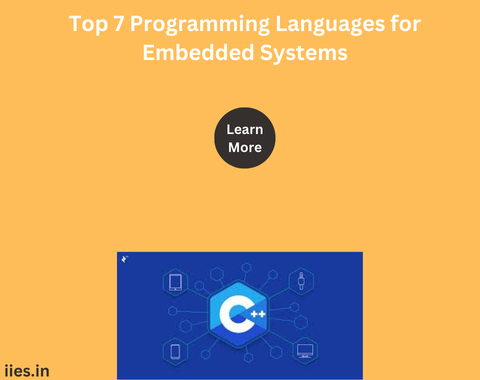
Embedded systems are specialized computing systems that perform dedicated functions within larger mechanical or electrical systems. Unlike general-purpose computers, these systems are designed to operate with minimal resources, often in real-time environments. Choosing the right programming language for embedded systems is crucial for optimizing performance, ensuring reliability, and meeting system constraints. Here, we explore the top seven programming languages widely used in embedded systems.
Overview: C is the undisputed king of embedded systems programming. Its low-level capabilities, coupled with high-level functionality, make it an ideal choice for developing firmware and operating systems for embedded devices.
Advantages:
Use Cases:
Overview: C++ builds on C by adding object-oriented programming (OOP) features. This makes it suitable for larger and more complex embedded applications where modularity and code reuse are important.
Advantages:
Use Cases:
Overview: Assembly language is the closest you can get to writing machine code while still using a human-readable syntax. It is essential for time-critical applications where every cycle counts.
Advantages:
Use Cases:
Overview: While not traditionally associated with embedded systems, Python has gained popularity due to its simplicity and the rise of powerful microcontrollers capable of running high-level languages.
Advantages:
Use Cases:
Overview: Ada is a statically-typed, high-level language designed for safety and reliability, making it a preferred choice for critical embedded systems.
Advantages:
Use Cases:
Overview: Rust is a modern systems programming language that aims to provide safety without sacrificing performance. Its emphasis on memory safety and concurrency makes it suitable for embedded systems.
Advantages:
Use Cases:
Overview: Java’s write-once, run-anywhere philosophy extends to embedded systems through Java ME (Micro Edition) and other embedded JVMs (Java Virtual Machines).
Advantages:
Use Cases:
Selecting the appropriate programming language for an embedded system depends on the specific requirements of the application, such as performance, memory constraints, and development time. C and C++ remain dominant due to their efficiency and control, while languages like Python and Rust are gaining traction for their ease of use and safety features. Assembly language remains essential for critical low-level tasks, and languages like Ada and Java cater to niche markets requiring high reliability and portability. Understanding the strengths and trade-offs of each language can help developers make informed decisions to meet their project goals.
Indian Institute of Embedded Systems – IIES